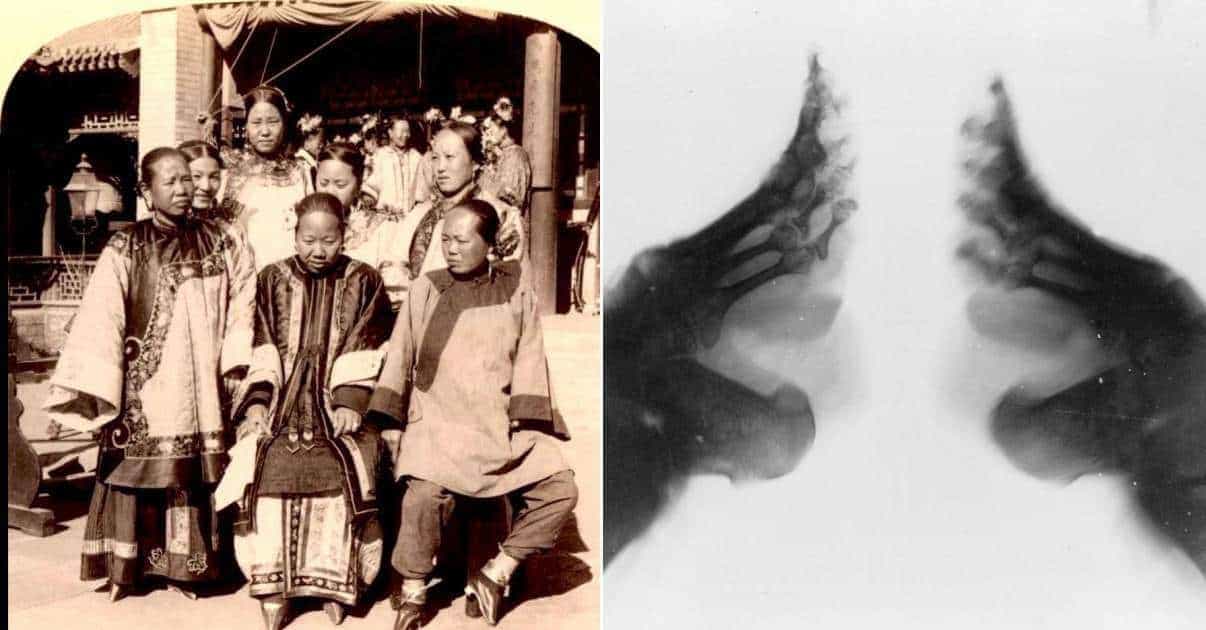When you think of medieval China many things come to mind like mighty emperors, warrior monks, and robed Confucian officials. But one of the most horrifying and enduring associations with the period in the popular imagination has to be foot binding. Foot binding was practiced in China for almost 1,000 years. It was a symbol of status, and, bound feet were even considered extremely erotic. But what exactly did foot binding involve? Why would anything so horrible be so popular? And why would men find it sexy?
The process of foot binding usually started while a girl was very young, typically between four and nine years old. Richer families usually preferred to have a professional footbinder, since they would be less likely to be moved by the girl’s cries than her mother or a relative. This was a real concern, as failing to bind the feet properly the first time would mean that it needed to be done again. And the process was so horrifyingly painful that it’s hard to imagine that a relative could bear to do it themselves. But in families that couldn’t afford a professional, they often did.

First, the feet were soaked in a mixture of animal blood and herbs that was thought to soften the feet and make them easier to bind. After being bathed, the toenails were cut back as far as possible to stop them from growing into the skin after the binding. Then the toes were pushed down and twisted into the bottom of the feet, shattering the bones. The loosened bones were then squeezed together as tightly as possible and bound up with cloth. Once the cloth was wrapped tightly, it was sewn together to prevent the girl from trying to loosen it.
Over the next few months, the feet would be broken and rebound at least a few times a week, keeping the bones from healing back into their natural position. As the feet began to swell with blood, the toenails and skin of the toes would begin to die, and the binder often had to bathe the feet in a solution that was designed to dissolve the dead flesh. Infection was a frequent concern, and toes would sometimes become so infected that they actually dropped off of the foot. But this was usually considered a good thing since it made it possible to make the feet even smaller.

Unsurprisingly, around 10% of girls subjected to footbinding died from infections. And the process usually resulted in life-long health problems for those who survived. The folds of the feet often attracted fungal infections, and observers stated that the bound feet often smelt terrible when the bindings were removed. It often took years for the bones in the feet to heal, and girls risked breaking them while walking until they were well into adulthood. As the girls grew into old age, the difficulty of balancing on bound feet made them more likely to fall and break their hips. So, why would anyone do it?

